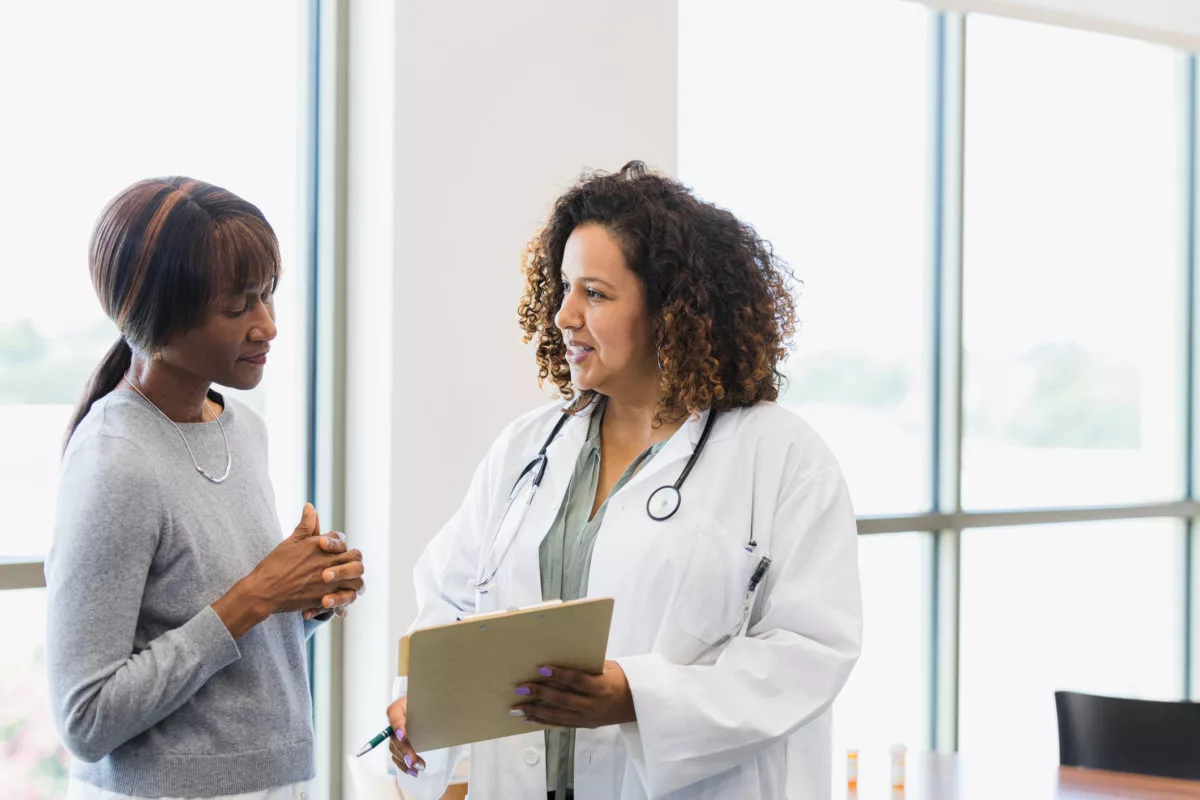
Regular breast checkups are essential for every single woman. They help eliminate confusion and uncertainty and prevent and diagnose health concerns, mainly when dealing with a lump in your breast. We get that it is tempting to ignore your feelings due to fear. However, it can be hazardous. It is essential to note that a lump doesn’t necessarily need to be ominous. It would mean that you might be dealing with fibrocystic disease.
If you are dealing with fibrocystic breasts, here is what you need to know about the disease and treatment options. But first, let us help you understand what fibrocystic breasts are.
What Is Fibrocystic Breast Disease?
Fibrocystic breast disease is a non-cancerous condition that can cause your breasts to feel lumpy, sometimes referred to as fibrocystic breast changes. It is most common in women, but men can develop it in sporadic cases. Nearly half of the women get impacted by this condition. The common symptoms of the disease include:
- Pain
- Tenderness
- Swelling
- Lump/lumps in the breast
- Thick breast tissue
- Nipple discharge that is typically green or brown
Are They Dangerous?
It is important to note that not all symptoms are present in every single woman as they vary significantly from person to person. You might develop lumps in one or both of your breasts, and symptoms can fluctuate through the month as you experience hormonal changes. Usually, the lumps are moveable; however, fibrous tissue can cause them to be fixed.
Fibrocystic breast changes aren’t dangerous; contrary to popular belief, they don’t increase your cancer risk. One major downside is that they can make detecting breast cancer more difficult. See your doctor if you feel any lumps or if you experience a discharge from your nipples.
Causes of Fibrocystic Breast Disease
Fibrocystic breast disease generally impacts women in the age bracket: 20 to 50. While the exact cause of this condition isn’t known, hormonal changes could cause them. This is how it works: Your ovaries release hormones that cause changes in the breast tissue, creating lumps. That is why most women experience lumpy breasts just before their periods.
It can cause swelling in the milk-producing glands or might form thick lumps in your boobs due to the excess growth of fibrous tissues. Symptoms typically get better if you decide to opt for birth control pills. Hormones cause this condition. That is why the symptoms improve or worsen as women hit menopause.
Identifying Fibrocystic Breast Changes
If, at any point, you notice a lump in your breasts, visit a doctor immediately. If your doctor suspects fibrocystic breast disease, they might ask you to undergo several tests for diagnostic purposes. These include:
Mammogram
A mammogram involves taking an X-ray of the breast. The procedure isn’t as effective for younger women as they have dense breast tissue.
Ultrasound
An excellent option for diagnosing fibrocystic breasts in young women is ultrasound, which is great for differentiating between solid masses and cysts, usually done with a mammogram. Ultrasound waves produce the image of breast tissue which can help your doctor diagnose the condition and identify the nature of mass in your breasts and the characteristics.
Fine Needle Aspiration
After an ultrasound and mammogram, your doctor will generally be able to diagnose the condition very effectively. However, they might perform a fine needle biopsy if they are still concerned. A needle is inserted into the lump to remove fluid and tissue. The test offers more definitive information on the nature of breast lumps.
Surgical Breast Biopsy
In rare cases, your doctor might send you for a surgical breast biopsy, which involves extracting a small sample of breast tissue used for further analysis.
BHRT and Fibrocystic Breasts
Estrogen and progesterone must be at healthy levels with a balanced ratio. BHRT helps support the liver, the primary organ involved in estrogen metabolism and clearance. BHRT can come in handy in this regard as it can help with liver support, healthy estrogen metabolism, and help with fibrocystic breasts.
One great benefit of BHRT is that it mimics your natural hormones, which means no side effects. This attribute gives it an edge over all the other treatments. It dramatically minimizes and eliminates any possible side effects and offers the best possible results because the doctors tailor your treatment. The treatment can be compounded in a lab to suit your specific needs.
Apart from fibrocystic breasts, a drop in progesterone and estrogen lead to plenty of other uncomfortable symptoms, including night sweats, mood swings, poor energy levels, and night sweats. BHRT is beneficial in tackling all these symptoms in one go.
Other Elements to Be Mindful Of
BHRT is an excellent treatment. However, it is sometimes combined with other techniques to achieve the best outcome. Some of them are listed below:
Digestion and Elimination
Women with less frequent bowel movements are at risk of developing fibrocystic breasts. The risk of toxins getting reabsorbed into the bloodstream is higher, which puts excess pressure on the liver. It calls for a healthy balance of beneficial bacteria in the gut. Taking probiotics will help decrease the bowel transit time and promote elimination.
Dietary Changes
Dietary changes can be of significant help, primarily when combined with BHRT. Studies indicate that reducing dietary fat intake by up to 20 percent will result in a significant decrease in circulating estrogen, which brings about positive results in women. Getting rid of caffeinated items such as chocolate, soda, coffee, and tea can significantly help.
Taking aqueous iodine supplements shows the best effect as they don’t cause hypothyroidism. If deficient in iodine, you will be at a higher risk of fibrocystic breast disease. Do not start taking iodine supplements yourself, and always use them under the supervision of a naturopathic doctor.
Final Takeaway
BHRT can be beneficial when it comes to treating fibrocystic breasts in women. The best part is that compounding pharmacies can customize it, minimizing the side effects and ensuring the best possible outcome.

 info@burtsrx.com
info@burtsrx.com
